Ilford Council Tramways
Summary
Ilford motormen always wore double-breasted, lancer-style tunics with five pairs of buttons (narrowing from top to bottom, and bearing a monogram of the council's initials surrounded by the full council title — see link), two waist pockets, and stand-up collars; the latter carried an employee number on the bearer's left-hand side (in individual numerals), whilst the other side probably carried system initials, presumably 'I C T', though this awaits confirmatory photographic evidence. Conductors were initially issued with single-breasted jackets with five buttons, two waist pockets (and possibly two breast pockets with button closures), and stand-up collars; the latter almost certainly carried identical insignia to those worn by motormen. The uniforms were initially of blue serge with red piping. The tensioned-crown peaked caps carried standard, off-the-shelf, script-lettering grade badges — either 'Motorman' or 'Conductor' — above which, an employee number was worn (in individual numerals); the badges were probably nickel to match the buttons.
The uniforms were changed to grey serge with green piping around the time of the Great War, probably at the same time that the tramcar livery was changed to green and cream (1915). The new uniforms comprised double-breasted, lancer-style tunics with epaulettes (possibly green); they were worn by both motormen and conductors. It is unclear whether the epaulettes bore insignia.
At some point in the late 1920s, conductors' jackets appear to have been changed once again, back to a single-breasted design, but with lapels and epaulettes. Although it is unclear what badges were worn on the caps and epaulettes following Ilford's elevation to borough status in 1926, there is a strong possibility that one or the other, or indeed both, bore a municipal-device badge based on the borough's newly acquired arms. Whilst the new armorial device was certainly applied to the tramcars, photographs of tramcar staff taken after 1926 are unfortunately both rare and indistinct, so it is currently unclear whether the uniform insignia were also updated.
Tramcar crews — mainly the motormen — also wore greatcoats; these were in a double-breasted, 'lancer style' with five pairs of buttons (narrowing from top to bottom) and high, fold-over collars, initially without epaulettes but in later years with. It would appear that neither the collars nor the epaulettes bore insignia, though this is far from certain.
Motormen and conductors always appeared in service wearing enamel Public Carriage Office licences (see link), usually worn on the left breast.
Women were almost certainly employed in the Great War to replace male staff lost to the armed services, however, the only photograph yet to come to light cannot unfortunately be ascribed with absolute certainty to Ilford. This photograph (see below) suggests that conductresses were issued with single-breasted jackets with five buttons, a waist belt with button fastening, high fold-over collars and epaulettes. Whilst the collars were left plain (i.e., unadorned), the epaulettes carried an employee number, at least on the bearer's left-hand side, and probably on both. A long-matching skirt was also worn. Headgear took the form of a stiff felt bonnet with a hat band; the surviving photograph shows the subject wearing a shield-shaped badge, which is more than likely a regimental sweetheart badge rather than a system-specific issue.
Photographs of inspectors have unfortunately not survived, so it is currently impossible to say what uniforms were worn.
For a history of the system, see: 'The Tramways of East London' by Rodinglea; The Tramway & Light Railway Society and The Light Railway Transport League (1967).
Images
Motormen and conductors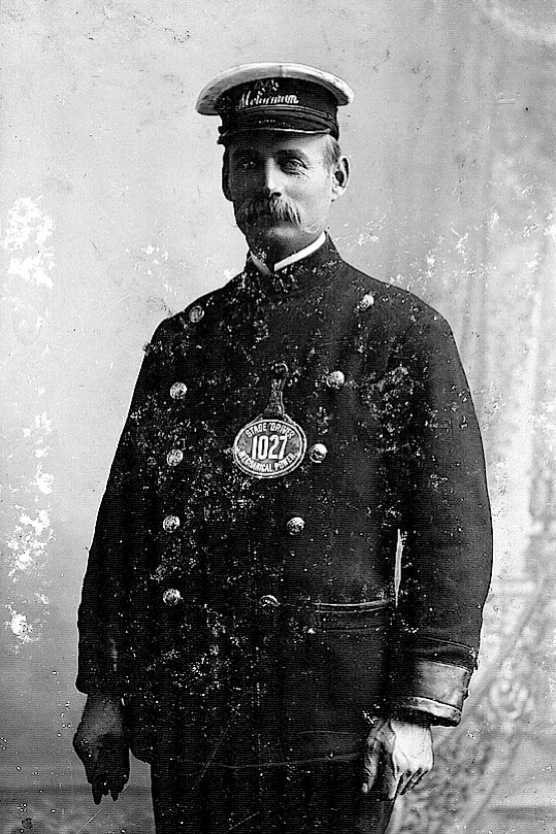
A damaged but nevertheless excellent portrait of Ilford Council Tramways Motorman No 44 — photo undated, but probably taken around the time of opening (1903). The subject is wearing a PCO 'Stage Driver Mechanical Power' licence badge (issued by the Metropolitan Police — see link). Magnification clearly shows the buttons to be the standard Ilford Urban District Council Pattern 1 type (see link). Photo courtesy of the LCC Tramways Trust Collection, with thanks to Dave Jones.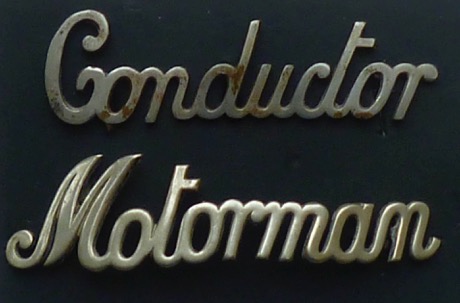
Standard off-the-shelf script-lettering cap badges of the type worn by Ilford staff — nickel. Author's Collection.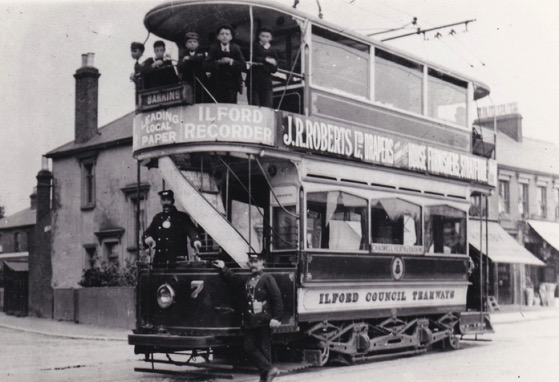
The crew of what is probably a newly top-covered Tramcar No 7 pose for the cameraman at Chadwell Heath around 1906. Photo courtesy of the Tramways and Light Railway Society, with thanks to Eddie Dawes.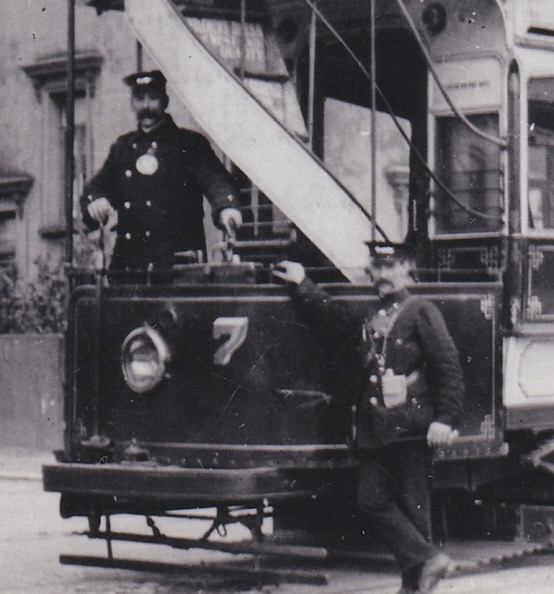
An enlargement of the above photograph showing the crew, the motorman in a double-breasted greatcoat and the conductor in a single-breasted jacket with stand-up collars. Despite the fact that both men have unfortunately moved, thus blurring the photo, the script-lettering grade badges on their caps can still be read.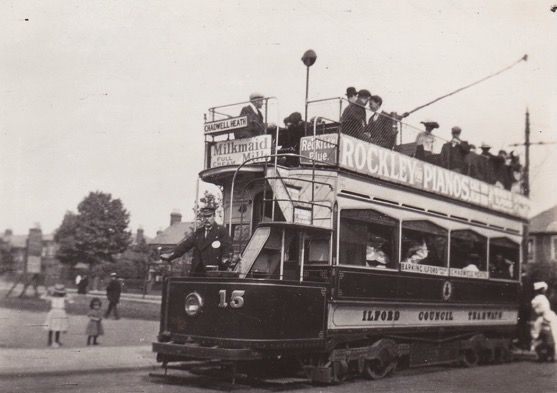
A motorman at the controls of Tramcar No 15 near Chadwell Heath — photo undated, but probably early-to-mid Edwardian. Photo courtesy of the Tramways and Light Railway Society, with thanks to Eddie Dawes.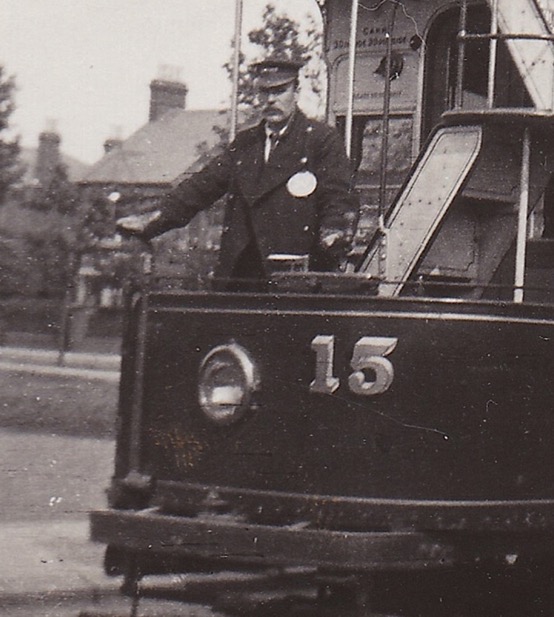
An enlargement of the above photograph showing the motorman, in unbuttoned tunic, or possibly a greatcoat, suggesting that it was a hot summer's day.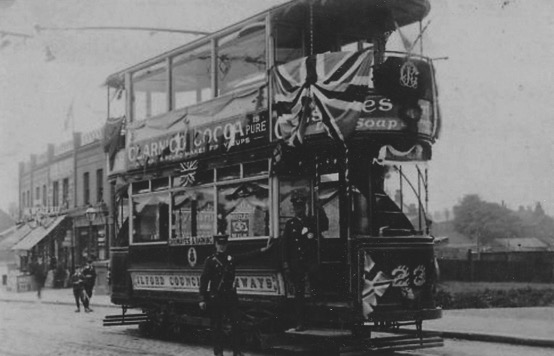
Tramcar No 23 (the original one of that number) stands near Loxford Bridge in 1918, decorated for some now unknown occasion. Photo courtesy of the Tramways and Light Railway Society, with thanks to Eddie Dawes.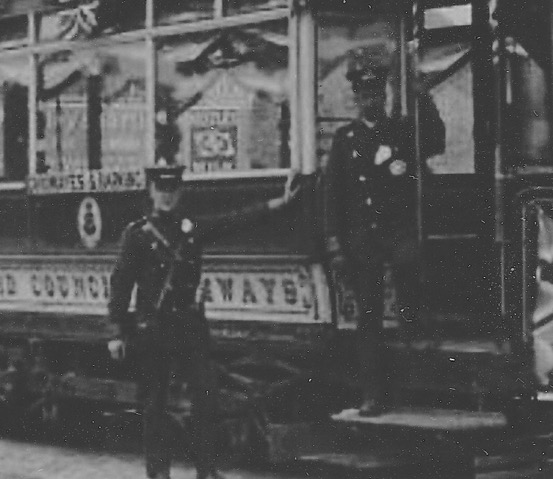
An enlargement of the above photograph showing the crew, both of whom are wearing lancer-style tunics.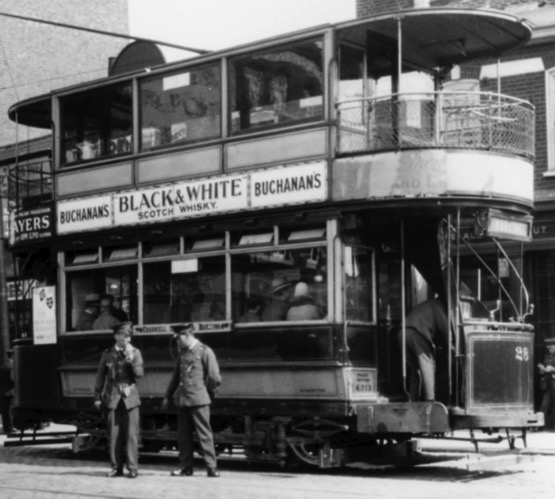
A conductor (in single-breasted tunic) and a motorman (in double-breasted tunic) take five minutes' break with Tramcar No 28 in the background — photo undated, but probably taken in the early 1930s, before this ex-Barking car was replaced. Photo courtesy of the Tramways and Light Railway Society, with thanks to David Voice.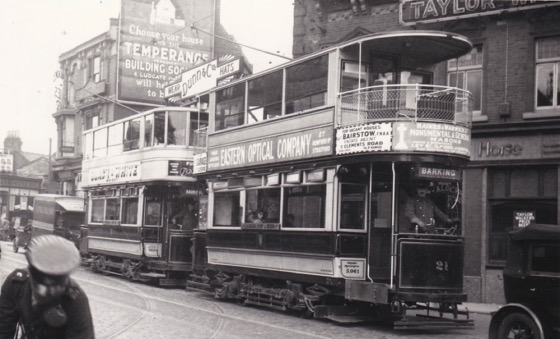
Ilford Council Tramways Tramcar No 21 captured in Ilford Broadway in April 1933, barely 3 months before the system's absorption into the London Passenger Transport Board (1st July 1933). The man on the left, almost certainly the conductor, clearly has a badge on his epaulette. Photo courtesy of the Tramways and Light Railway Society, with thanks to Eddie Dawes.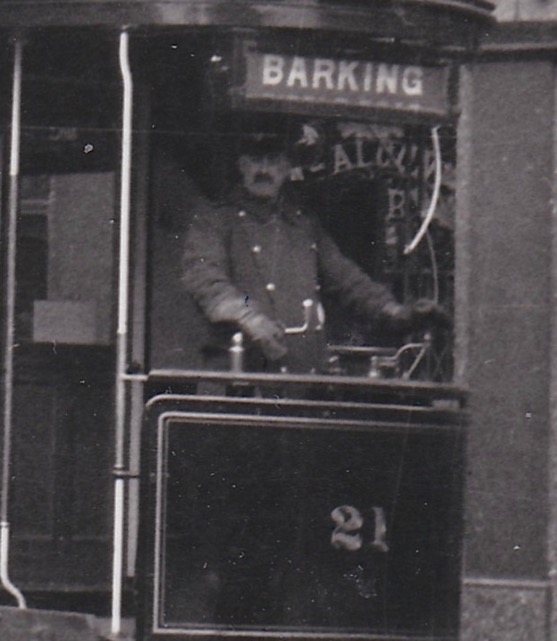
A blow-up of the above photo showing the motorman, who is wearing a double-breasted greatcoat, devoid of insignia.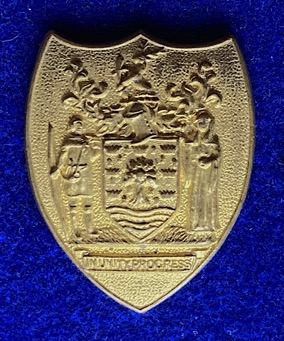
An Ilford Borough municipal-device cap badge — brass. There is a reasonable possibility that this pattern of badge was applied to tramway men's uniforms (epaulettes or caps) after 1926, though it remains unproven. Author's Collection. 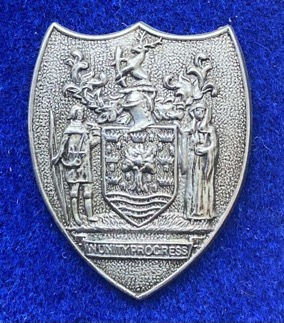
An Ilford Borough municipal-device cap badge — nickel. Author's Collection.
Female staff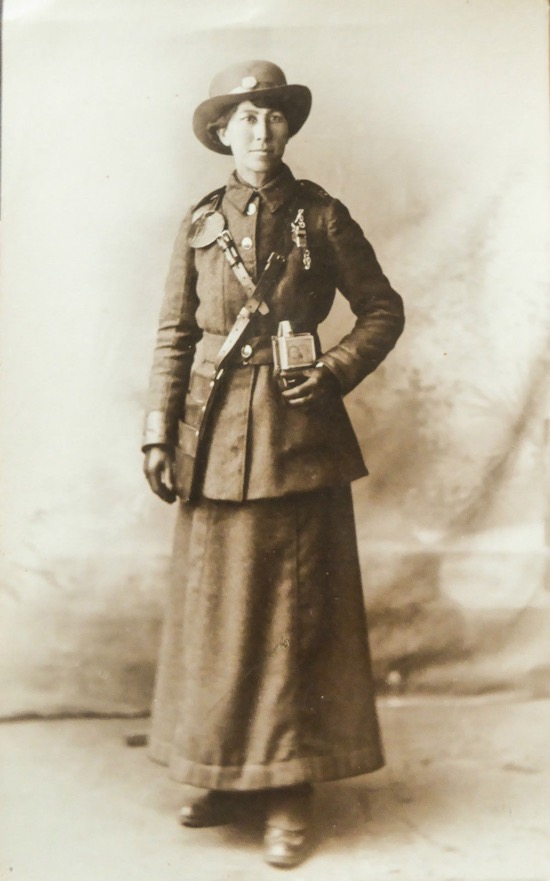
A portrait taken in the studios of F W Clark of Forest Gate and Ilford — photo undated, but almost certainly taken during the Great War. Whilst the subject could well be an employee of Ilford Council Tramways, there remains a distinct possibility that she was a servant of one of the other local tramways, namely: Barking Town UDC Tramways, East Ham Corporation Tramways or West Ham Corporation Tramways. Source unknown.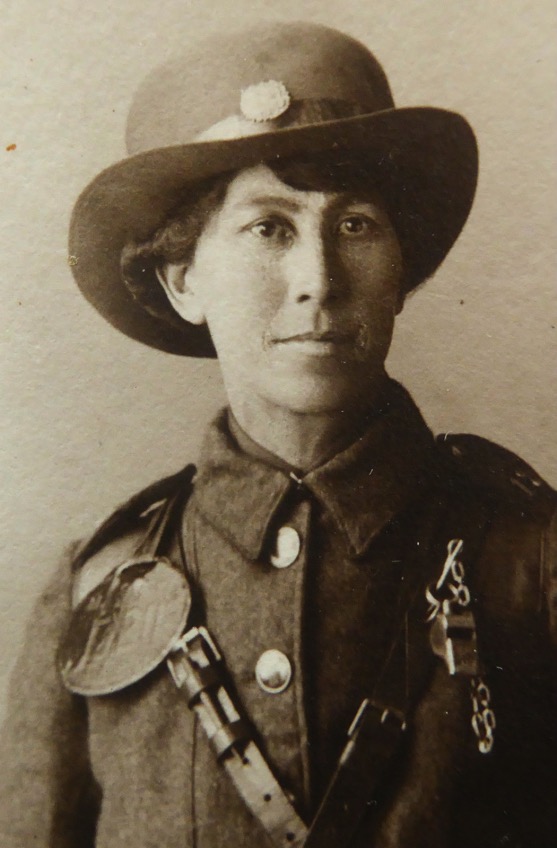
An enlargement of the above photograph showing details of the uniform and headwear. The cap badge is very probably a regimental sweetheart badge, the wearing of which was very common during the Great War, being used to show solidarity with a loved one serving in the armed forces.